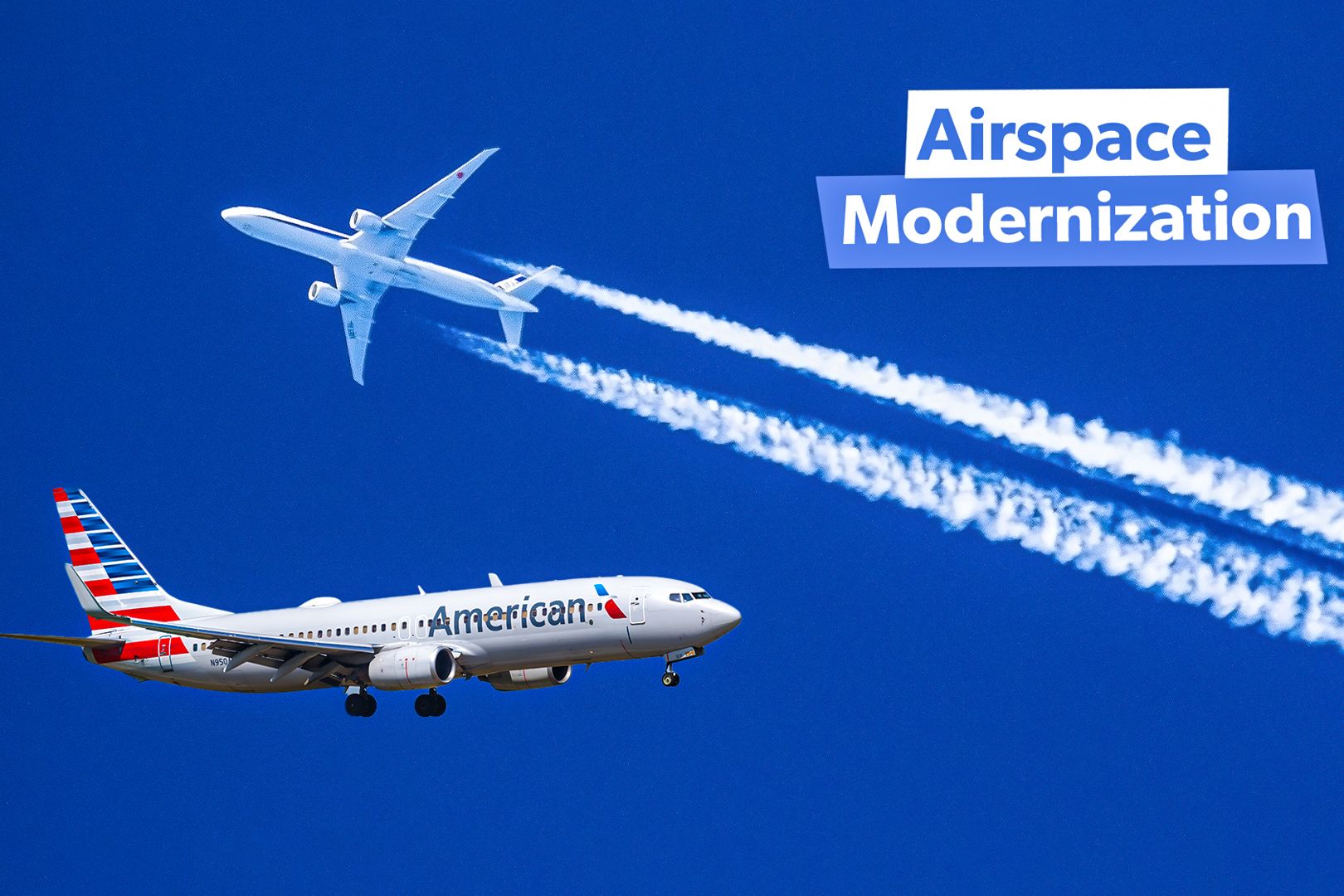Summary NextGen shifts from radar to satellite tracking, boosting accuracy and communication between pilots and controllers. Performance-Based Navigation enables more direct routes, fuel savings, emissions reduction, and increased airspace capacity. NextGen integrates digital communications, advanced weather forecasting, and environmental benefits to enhance air travel in the US.
The Next Generation Air Transportation System (NextGen) represents a comprehensive overhaul to modernize the United States' National Airspace System (NAS), implemented by the Federal Aviation Administration (FAA). NextGen aims to increase the efficiency, safety, and sustainability of air travel. Here are five key aspects you need to know about this transformative initiative: 1 From ground-based to satellite-based The evolution from radar technology NextGen is a significant shift from the traditional radar-based air traffic control to a satellite-based system, per the FAA .

Radar has been the backbone of air traffic control since World War II, but it comes with limitations in accuracy and coverage, especially over oceans and remote areas. Satellite technology, however, provides precise, real-time positioning of aircraft, enabling better tracking and more efficient routing. Satellite technology offers enhanced accuracy as satellite-based tracking offers more precise aircraft positions.
Further, unlike radar, which has blind spots, satellite technology covers even the most remote areas. A satellite-based system also improves communication between pilots and air traffic controllers , reducing delays and enhancing safety. The second phase, or Epoch 2, will involve up to 18 satellites.
According to Skybrary , the elements of NextGen are: Automatic dependent surveillance-broadcast (ADS-B) Next Generation Data Communications Next Generation Network Enabled Weather (NNEW) System Wide Information Management (SWIM) NAS voice switch (NVS) 2 Performance-Based Navigation (PBN) More precise flight paths, more fuel savings Performance-Based Navigation is one of the core components of NextGen, allowing aircraft to follow more direct and fuel-efficient routes, per the FAA . PBN uses advanced avionics and GPS technology to guide aircraft, reducing the need for traditional ground-based navigation aids. PBN includes both Area Navigation (RNAV) and Required Navigation Performance (RNP) .
RNAV allows aircraft to follow any desired flight path within the range of ground- or satellite-based navigation aids, or according to the aircraft's capabilities. RNP, on the other hand, is a more advanced form of RNAV, requiring aircraft to be equipped to continuously monitor their navigation performance. It also alerts pilots if the performance falls below required levels during a flight.
RNP procedures are particularly useful for operations in challenging environments, such as near mountainous terrain or in busy airspace, enhancing both safety and efficiency. The key benefits of PBN are: Fuel Efficiency: PBN enables shorter routes, cutting down on fuel consumption. Reduced Emissions: More direct routes mean fewer emissions, contributing to environmental sustainability.
Increased Airspace Capacity: With more efficient routing, more aircraft can be managed within the same airspace, reducing congestion. Getting lost is a thing of the past. 3 Next Generation Data Communications Enhancing productivity, capacity, and safety At present, communication between aircrew and air traffic control, as well as among air traffic controllers themselves, is done primarily through voice communications.
According to the FAA , NextGen’s new digital communications enable a more efficient and timely message exchange between air traffic controllers and pilots. This system offers an additional method for two-way communication to deliver: Air traffic control clearances Instructions Advisories Flight crew requests Reports As most aircraft are equipped with data links, exchanging routine controller-pilot messages and clearances through this system will allow controllers to manage more traffic, boosting their productivity and enhancing both capacity and safety. 4 Next Generation Network Enabled Weather (NNEW) Improved weather forecasting and management Weather is a major factor in air travel delays and disruptions – it affects flight schedules and safety, leading to longer wait times and altered travel plans.
NextGen integrates advanced weather forecasting tools into the air traffic management system, allowing for better planning and decision-making, ultimately helping to mitigate the impact of severe weather on flight operations. According to Skybrary , weather is responsible for 70% of NAS delays each year. NextGen's Next Generation Network Enabled Weather (NNEW) system aims to reduce these weather-related delays by at least 50%.
Integrating tens of thousands of global weather observations and sensor reports from ground, airborne, and space-based sources into a unified, real-time national weather information system, NNEW will deliver a consistent weather overview across the national airspace system and enhance decision-making in air transportation. Some of NNEW’s positive impacts include: Real-Time Data: Access to up-to-the-minute weather information for pilots and controllers. Predictive Models: Enhanced forecasting models help anticipate weather patterns and adjust flight paths accordingly.
Safety Enhancements: Improved weather information leads to safer flights, especially during turbulent conditions. 5 Environmental benefits NextGen is good for all NextGen is designed not only to enhance the operational efficiency of air travel but also to provide substantial environmental benefits, in line with global efforts to decarbonize the aviation industry . Additionally, the FAA supports programs to facilitate sustainable aviation fuel uptake, as well as aircraft and engines with lower fuel consumption and emissions, per the FAA .
By reducing fuel consumption, decreasing flight times, and improving airspace management, NextGen is helping to create a more sustainable and cost-effective air transportation system. Environmental impact: More efficient flight paths contribute to lower greenhouse gas emissions. New procedures help minimize noise pollution around airports.
New systems and technologies allow the industry to keep up with environmental standards across the NAS. Today, only 28% of aircraft are new-generation. NextGen is a transformative initiative that is reshaping the future of air travel in the US.
By leveraging satellite technology, improving navigation and communication, and focusing on sustainability, NextGen is set to make air travel safer, more efficient, and environmentally friendly. As the system continues to evolve, it will play a crucial role in meeting the demands of modern aviation while reducing the environmental impact of air travel. The Next Generation Air Transportation System is set to be fully implemented by 2030.
.



















